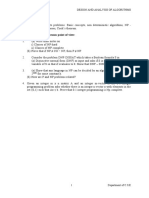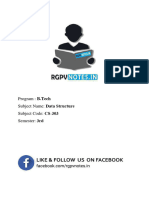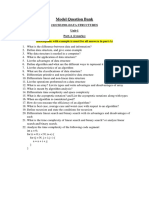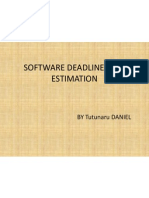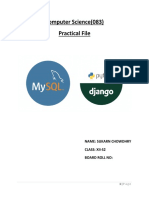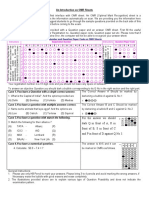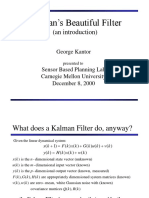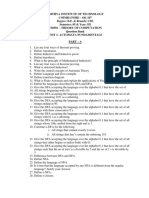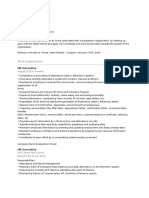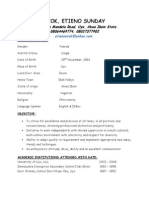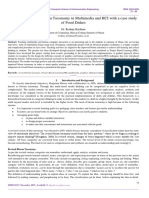0% found this document useful (0 votes)
545 views6 pages23CS0507 - Advance DataStructure and Algorithms - R23
This document is a question bank for the Advanced Data Structures & Algorithm Analysis course (23CS0507) at Siddharth Institute of Engineering & Technology. It includes various units covering topics such as AVL Trees, B-Trees, Heap Trees, Graphs, Greedy Methods, Dynamic Programming, Backtracking, and NP Hard and NP Complete Problems, with specific questions for each unit. Each question is categorized by its level of difficulty and corresponds to course outcomes.
Uploaded by
kalimullafake32Copyright
© © All Rights Reserved
We take content rights seriously. If you suspect this is your content, claim it here.
Available Formats
Download as PDF, TXT or read online on Scribd
0% found this document useful (0 votes)
545 views6 pages23CS0507 - Advance DataStructure and Algorithms - R23
This document is a question bank for the Advanced Data Structures & Algorithm Analysis course (23CS0507) at Siddharth Institute of Engineering & Technology. It includes various units covering topics such as AVL Trees, B-Trees, Heap Trees, Graphs, Greedy Methods, Dynamic Programming, Backtracking, and NP Hard and NP Complete Problems, with specific questions for each unit. Each question is categorized by its level of difficulty and corresponds to course outcomes.
Uploaded by
kalimullafake32Copyright
© © All Rights Reserved
We take content rights seriously. If you suspect this is your content, claim it here.
Available Formats
Download as PDF, TXT or read online on Scribd
/ 6

























